In the intricate tapestry of Greek mythology, a realm brimming with gods, heroes, and fantastical creatures, nymphs emerge as captivating yet elusive figures. These divine spirits, predominantly female, are intricately woven into the Hellenic mythos, embodying the very essence of nature’s beauty and mystery. Nymphs, often depicted as guardians of forests, rivers, and mountains, played a pivotal role in the myths and daily life of ancient Greeks. They were revered not just for their ethereal beauty but also for their connection to the natural elements, influencing everything from agriculture to cultural rituals. This introduction to nymphs invites us to delve deeper into their world, exploring their significance and the enduring allure they hold in the vast panorama of Greek mythology.
| Origin | Greek Mythology |
| Classification | Mythical Creatures |
| Appearance | Often portrayed as beautiful, young, and immortal female beings associated with nature |
| Types of Nymphs | Various types include Dryads (tree nymphs), Naiads (water nymphs), Nereids (sea nymphs), and more |
| Habitat | Associated with specific natural elements, such as forests, rivers, mountains, and the sea |
| Role | Guardians of their respective natural domains; companions to gods and heroes |
| Cultural Impact | Prominent figures in Greek mythology and often featured in art, poetry, and literature |
1. The Nature and Origins of Nymphs
Characteristics and Types of Nymphs
In the realm of Greek mythology, nymphs are depicted as divine spirits, each embodying a unique facet of nature. These ethereal beings, primarily female, are immortal and eternally youthful. Their types vary, each associated with different natural elements:
- Naiads: Water nymphs residing in rivers, springs, and lakes, symbolizing the life-giving force of freshwaters.
- Dryads and Hamadryads: Forest nymphs connected to trees, particularly oaks. Hamadryads are so closely linked to their specific tree that their fate is tied to it.
- Oreads: Mountain nymphs, representing the rugged grandeur of highlands and hills.
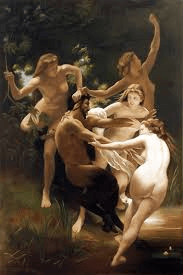
Historical Origins and Cultural Significance
Nymphs hold a prominent place in ancient Greek culture. They are more than mere mythological characters; they represent the Greeks’ reverence for nature and its elements. The Greeks often worshipped nymphs for their influence on agriculture, pastoral practices, and fertility, and they manifested this worship through various rituals, offerings, and festivals, highlighting the nymphs’ integral role in their daily life. The presence of nymphs in mythology and cultural practices illustrates the ancient Greeks’ understanding of the natural world’s importance, emphasizing a harmonious coexistence with the environment essential for societal well-being and prosperity.
2. Famous Myths Involving Nymphs
The Tale of Echo and Narcissus
One of the most poignant myths involving a nymph is the story of Echo and Narcissus. Echo, a nymph cursed by Hera to only repeat the last words spoken to her, fell deeply in love with the beautiful youth Narcissus. However, Narcissus, known for his extraordinary beauty and pride, rejected her love. Heartbroken, Echo faded away until only her voice remained. This myth encapsulates the theme of unrequited love and the consequences of vanity. Narcissus, obsessed with his reflection, eventually turned into the flower that bears his name, symbolizing self-absorption and the fleeting nature of physical beauty.
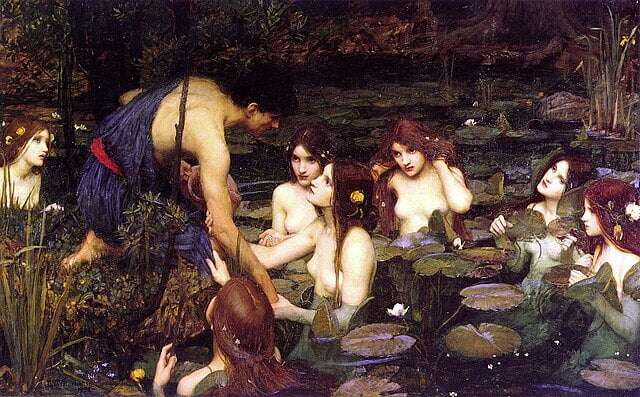
The Pursuit of Daphne by Apollo
Another famous myth is the pursuit of the nymph Daphne by Apollo, the god of light. After being struck by Eros’s arrow, Apollo became infatuated with Daphne, a lover of nature and follower of Artemis. Daphne, determined to remain independent and untouched, fled from Apollo’s advances. In her desperation to escape him, she transformed into a laurel tree. This story is often interpreted as a narrative about the struggle for autonomy and identity, especially in the face of unwanted advances. The transformation of Daphne into a laurel tree, later used by Apollo to crown heroes, also symbolizes the endurance of spirit and identity beyond physical form.
3. Symbolism and Representation
Symbolism of Nymphs in Greek Mythology
Nymphs in Greek mythology are rich in symbolic meaning. Primarily, they symbolize nature’s beauty and fertility. As guardians of natural elements, they personify the life-giving and nurturing aspects of the environment. Nymphs also represent the ephemeral nature of life, mirroring the transient yet vital aspects of nature, such as the flow of water or the blooming of a tree. People often see them as embodying the delicate balance between the wild and the civilized, bridging the gap between the human world and nature.
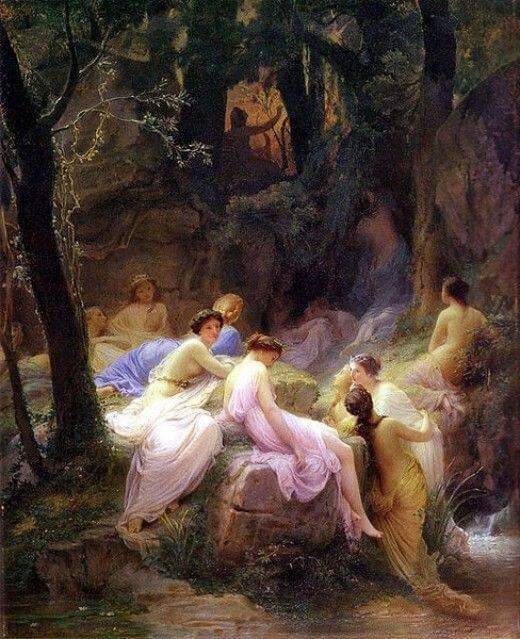
Nymphs in Art and Literature
Throughout history, nymphs have been a popular subject in art and literature, often portrayed as embodiments of idealized beauty and natural harmony. In classical art, they are frequently depicted in pastoral settings, highlighting their connection to the natural world. Renaissance art saw a revival of interest in mythological themes, with nymphs often represented in paintings and sculptures, symbolizing both physical beauty and spiritual grace.
In literature, nymphs have been featured in various works, from Ovid’s “Metamorphoses” to more modern interpretations in poems and novels. They often appear as characters that challenge the protagonists or represent unattainable ideals. Their portrayal has evolved over time, reflecting changing cultural attitudes towards nature and femininity.
4. Nymphs in Modern Culture
Adaptation in Modern Literature and Film
Modern literature and film have intriguingly adapted the concept of nymphs, often using them as symbols of nature’s mystery and allure. In contemporary literature, authors sometimes reimagine nymphs with a modern twist, incorporating them into fantasy novels and young adult fiction where they frequently embody themes of environmental conservation and the exploration of feminine identity. These works portray nymphs as complex characters that bridge the ancient mythological world and contemporary issues.
In cinema, nymphs have inspired characters and narratives in fantasy and adventure genres. These adaptations often highlight their mystical qualities, emphasizing their connection to nature and the supernatural. Movies and television series sometimes use nymphs as metaphors for broader themes such as the loss of innocence, the power of nature, or the exploration of mystical realms.
Impact on Contemporary Storytelling and Art
The influence of nymphs extends beyond specific character portrayals; they have become a part of the collective cultural imagination. Characters that embody natural beauty, an untamed spirit, or ethereal mystery often display the archetype of the nymph in modern storytelling. Contemporary art frequently utilizes imagery of nymphs to explore and critique concepts of femininity, ecology, and the human relationship with nature.
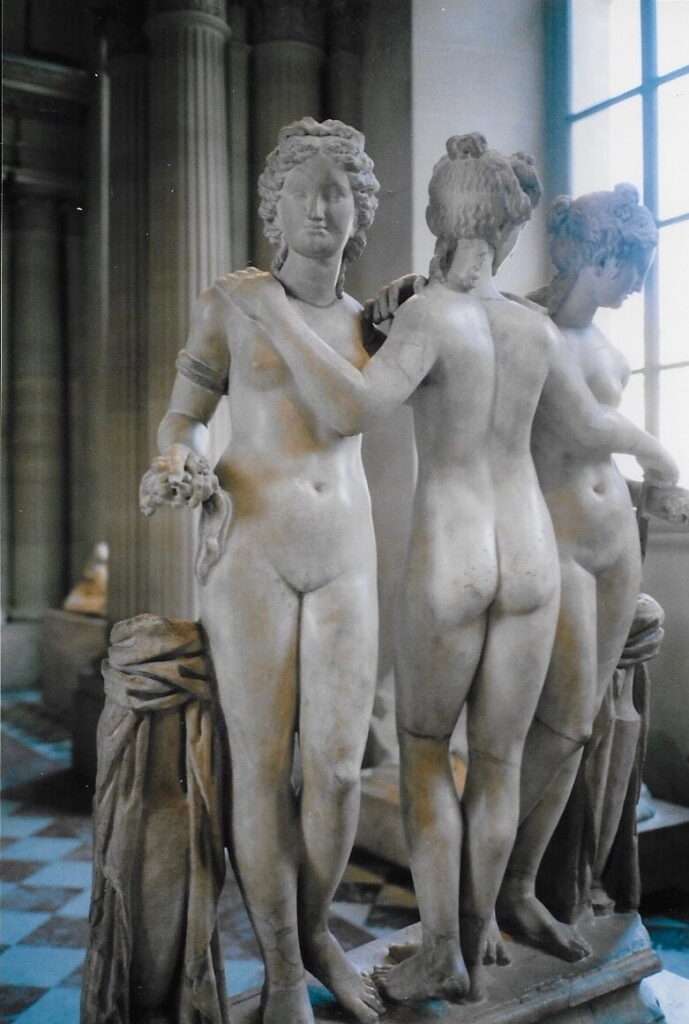
The enduring fascination with nymphs in modern culture reflects their versatility as symbols and their ability to resonate with contemporary audiences. Their presence in modern media continues to foster a connection to the mythic past, while also providing a lens through which to examine current societal and environmental issues. Through these varied representations, nymphs remain a relevant and inspiring element in the tapestry of modern storytelling and artistic expression.
5. Comparative Mythology
Nymphs and Hindu Apsaras
In comparative mythology, Greek nymphs find a parallel in the Apsaras of Hindu mythology. The gods employ Apsaras as court dancers, where they showcase their exceptional beauty and mastery of dance and music. In contrast, Greek nymphs, typically associated with specific natural locales, especially water bodies, perform a different role. Both share the role of embodying the beauty and the ephemeral nature of life, but Apsaras also carry a divine aspect, acting as muses and messengers for the gods, a trait less emphasized in Greek nymphs.
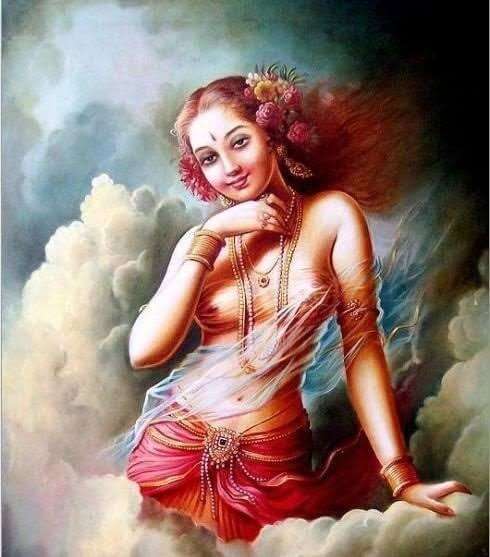
Nymphs and Celtic Fairies
Celtic mythology’s fairies also share similarities with Greek nymphs. Both are portrayed as enchanting, nature-bound entities, often connected to specific natural sites like forests, hills, or streams. Fairies in Celtic lore, however, have a broader range of characteristics – they can be benevolent or malevolent, whimsical or solemn. Unlike the generally benevolent Greek nymphs, fairies can have a more ambiguous nature, reflecting the unpredictable aspects of nature. Both fairies and nymphs serve to personify natural phenomena and embody the cultural understanding of humanity’s relationship with nature.
Broader Cultural Context
This comparative look at similar mythical beings in different cultures highlights a universal human tendency to personify and deify natural elements. While nymphs, Apsaras, and fairies differ in specifics, they all represent a deep-rooted human appreciation and reverence for the natural world. They embody the beauty, mystery, and power of nature, reflecting the values and beliefs of their respective cultures. This comparison provides a broader understanding of how different civilizations have conceptualized and interacted with the natural world through their mythologies and folklore.
6. Conclusion
Throughout this exploration of Greek nymphs, we’ve delved into their nature, origins, and the rich tapestry of myths that surround them, revealing their symbolic significance as personifications of nature’s beauty, fertility, and transient aspects. Their portrayal in art and literature through the ages reflects the enduring fascination with these mythological beings, highlighting their role as a bridge between the natural world and the human experience. The adaptation of nymphs in modern culture, from literature to film, underscores their continued relevance, serving as symbols for contemporary themes and societal reflections. Comparative mythology with entities like Hindu Apsaras and Celtic Fairies further emphasizes the universal human inclination to embody nature’s elements in mythic forms. The enduring legacy of Greek nymphs lies in their ability to encapsulate the mystique and allure of nature, continuing to captivate and inspire across cultures and generations.
